The first Conservative only budget in more than 19 years back in July 2015 was certainly not welcomed by the contracting community.
From a contractor’s point of view one of the biggest changes announced in the budget is the change to the way in which dividends will be taxed from 6th April 2016.
As it stands all UK dividends are paid with a notional tax credit of 10%. That means that for every £1,000 of dividend income received by a person HMRC treats it as being a gross dividend of £1,111 and assumes that £111 in basic rate tax has already been paid. That’s the reason why non-taxpayers and basic rate taxpayers have no further tax to pay on dividend income.
Higher and additional rate tax payers do, of course, have to pay tax on dividend income that falls into the higher or additional rate bands. In real terms the rates at which this tax is currently paid is 25% for higher rate taxpayers and 30.56% for additional rate taxpayers.
However, with effect from 6th April 2016, the taxation of dividends will change.
From 6th April 2016, the current system of notional tax credits on dividends will no longer be used. Instead, everyone will be entitled to receive £5,000 of dividend income free of tax. The balance of any dividends paid over £5,000 will then be taxed according to whichever tax band applies to the aggregate amount of the dividend and the recipient’s other taxable income.
The rates at which dividend income over £5,000 will be taxed are 7.5% for basic rate taxpayers, 32.5% for higher rate taxpayers and 38.1% for additional rate taxpayers.
These changes will impact upon limited company freelancers, contractors and small businesses that typically use the low salary and dividend strategy of profit extraction (or anyone who receives dividend income in excess of the new £5,000 tax free dividend allowance). This will also affect any dividends received from other company investments.
Income extraction is often a personal strategy tailored around different life styles and financial commitments that will require a tailored calculation to compare the accurate impact of the changes, if this is the case please contact us directly and we would be happy to provide a tailored example. Below we have included some common examples that compare the new rules to the existing rules;
Example 1 – Taking dividends up to the higher tax threshold
Many freelancers and contractors operating their own Limited Companies outside of the IR35 legislation take salary and dividends up to the higher tax threshold and retain the balance of any profits within their Limited Companies. The example set out below illustrates the changes.
2015-16 2016-17
Annual Salary 8,060 8,060
Dividend 30,892 34,940
Total Gross Income 38,952 43,000
Dividend Tax NIL 2,025
Net Income 38,952 40,975
In real terms the dividend changes mean £2,025 of personal tax due in 16-17 compared to no tax liability in the 15-16 year.
In the new tax year commencing 6th April 2016 individuals will be in a position to extract more income from the Company without exceeding the higher tax threshold, in the attached example this totals £4,048.
Example 2 – Cash dividends of £50,000
2015-16 2016-17
Annual Salary 8,060 8,060
Dividend 50,000 50,000
Total Gross Income 58,060 58,060
Dividend Tax 4,776 6,919
Net Income 53,284 51,141
In the above example the additional tax liability for the tax year would be £2,141.
Primus recommendations post 5th April 2016
- If you have a spouse it will be more important than ever to consider if there are income splitting opportunities (them being a shareholder and/or director/employee so that they can take a dividend and/or salary). This option may not be relevant in particular cases so it is important that individual advice is requested from our tax department in advance of any changes being implemented.
- You might want to consider making company pension contributions if you aren’t making provision for this (Individual investment and pension advice is regulated by the Financial Conduct Agency and will need to be provided by a financial advisor, if necessary we can provide recommendations).
- It is likely that individuals who receive dividend payments and are not already registered for Self Assessment will need to do so from 6th April 2016. Self Assessment registration should be completed via the HMRC website at the following link – https://online.hmrc.gov.uk/shortforms/forms/sa1
- Many individuals will be brought into the Self Assessment payments on account regime – https://www.gov.uk/understand-self-assessment-bill/payments-on-account
- Individual income extraction arrangements should be reviewed before 5th April 2016 to ensure that advantage is taken of available tax allowances and thresholds.
Please feel free to contact us for a tailored example of how the new rules will affect you.
Best regards
Primus Accountancy LLP





